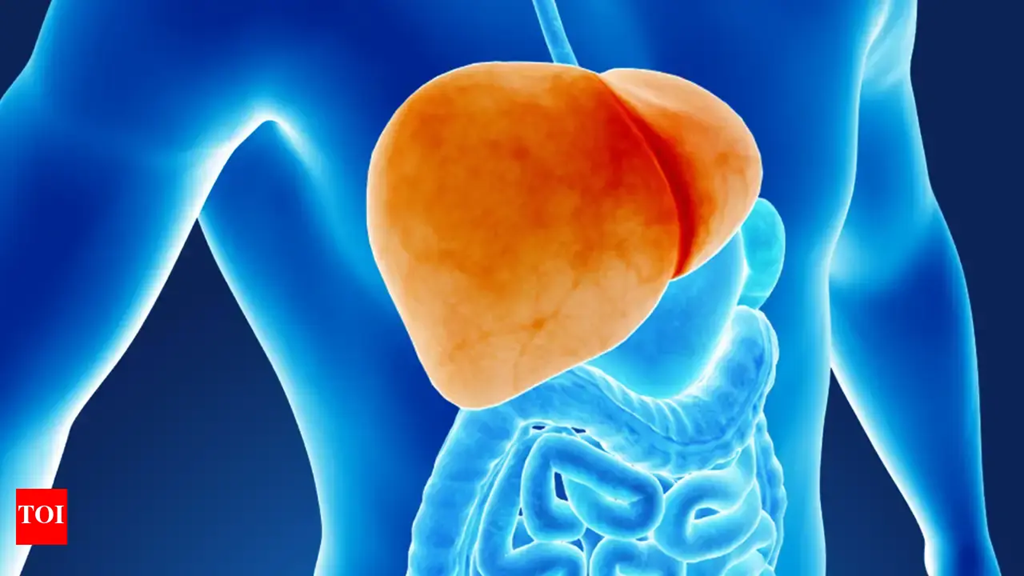
“I’ve been in the Parkinson’s field since I was 18 years old, and we are still stuck with a black box—we don’t have any disease progression biomarkers, and that is a critical need.”
Having spent his entire career in the Parkinson’s field, Robert E. Drolet, PhD, senior principal scientist at Merck’s Neuroscience Department, cannot overstate that the key to a therapeutic breakthrough depends on the ability to visualize Parkinson’s pathology in patients’ brains.
“It is incredibly challenging to run good therapeutic trials—depending on who you talk to, it may or may not be feasible,” Drolet told Inside Precision Medicine. “That’s because if you’re running a clinical trial, the only approved, registrable endpoint, which is the Unified Parkinson’s Disease Rating Scale (UPDRS) or the number of subjects that you need to recruit, is beyond reason. So, many clinicians, especially in the pharmaceutical industry, say you can’t really run a good clinical trial as it currently stands.”
But now Drolet and Merck have a bit of hope. Earlier this week at the 2025 AD/PD Conference in Vienna, Austria, Drolet presented encouraging early results from a small first-in-human clinical trial using MK-7337, a new α-synuclein PET tracer. The Merck researchers showed that MK-7337 could detect α-synuclein in key brain regions known to be affected by idiopathic Parkinson’s disease, including the substantia nigra.
“We would rather not overstate the results, but it’s hard not to be excited about it,” said Drolet. “Everybody involved with the study was excited about it, even though it’s a small proof-of-concept study. Having done this for 10 long years of research on this and seeing that image in the substantia nigra was gratifying because everybody appreciates what the downstream impact could be of the first great PET tracer in Parkinson’s, finally being able to understand better the biology and rates of progression underlying this horrible disease.”
Vikram Khurana, MD, PhD, division chief of movement disorders and the Tracy T. Batchelor Endowed Chair in Neurology at MassGeneral Brigham and Harvard Medical School, agrees with the rationale of the Merck group’s work on MK-7337 and also echoed Drolet’s cautious optimism. “There is no question that there is an acute need for an alpha-synuclein radiotracer in the Parkinson’s field for accurate and early diagnosis and for assessing target engagement of drugs,” Khurana told Inside Precision Medicine. “It’s really difficult to fully comment until we see a larger and more definitive study. But this does sound very encouraging and worth pursuing.”
The Parkinson’s PET tracer elephant graveyard
MK-7337 isn’t the first α-synuclein PET tracer in the clinic. The preceding Parkinson’s PET tracers, of which Drolet said there are at least five that have been tested, were unable to visualize α-synuclein pathology in a living subject with idiopathic Parkinson’s disease before.
To not end up with another futile attempt, Drolet said that the team at Merck focused on finding a preclinical tracer with extremely high affinity and excellent selectivity that also worked in postmortem brain tissue from Parkinson’s disease. In mice, MK-7337 passed with flying colors, with nanomolar-level competitive and saturation binding (Ki = 1 nM, Kd = 0.4 nM), and was highly selective with no affinity for monomeric synuclein or β-amyloid, weak affinity for tau, or any other targets.
“This is by far the most potent tracer ever to enter the clinic, and we know a lot about the ones that failed,” said Drolet. “We think they failed because they weren’t high enough affinity, and when combined with the low target density in Parkinson’s disease, the likelihood of success was significantly reduced. So, we invested significant time and effort in developing a tracer with highly potent properties. It’s subnanomolar affinity, which is about where you need to be actually to have a chance at success here.”
But things got a bit shaky at the nonhuman primate (NHP) stage, where PET revealed off-target binding in the cortex, thalamus, and cerebellum and low signal in the midbrain/brainstem region of interest. What’s more, the radiotracer in that was chosen to be paired with MK-7337 is carbon-11 (C11), which has a half-life of 20 minutes. That short half-life all-but-eliminates the tracer’s utility in large multi-center clinical trials, which is what Merck and all the pharmaceuticals would want this tracer for.
Rolling the dice
Merck and the Michael J. Fox Foundation (MJFF) decided to risk everything and try it on people because the field had been dealt blow after blow, and they were desperate for a successful PET tracer. “We decided, because of the regions that we do care about in the brain that were low for this off-target, along with the Fox Foundation, that it was worth taking this tracer into the clinic to at least test if…we could see synuclein pathology in a living patient in Parkinson’s disease,” said Drolet. “The MJFF has been funding studies on this for over 15 years, and they’ve had nothing to show for it. So, they wanted to see an image, and if this was even technically feasible, we made the most potent tracer you could make. If this didn’t work, we would have given up.”
The [C11]MK-7337 small first-in-human trial recruited eight subjects with Parkinson’s and four healthy elderly patients and showed the first evidence of α-synuclein pathology in idiopathic Parkinson’s patients. All participants showed good brain penetration of [11C]MK-7337. In participants with hyposmic Parkinson’s, [11C]MK-7337 showed elevated retention in the substantia nigra, brainstem (pons region), and olfactory epithelium that was not observed in age-matched healthy participants. For the Parkinson’s patients with high [11C]MK-7337 signal, Drolet and the team did not observe off-target binding of [11C]MK-7337 to tau. Where [11C]MK-7337 fell short is that the tracer shows a similar pattern of off-target binding in healthy elderly patients as it did in NHPs.
“I think the Merck team is exactly right in focusing on a high-potency molecule that is highly selective for alpha-synuclein versus other ‘amyloids’ like tau or beta-amyloid,” said Khurana. “Mixed pathologies are common in the brain so nanomolar level affinity and high selectivity is important. Similar tracers in the Alzheimer’s field have been game changers, but the Parkinson’s field has been plagued by tracers that have simply not been specific enough. It is encouraging in this study that the team has seemingly achieved a meaningful distribution of signal. Put another way, the signal seems to fit what we know about the human pathology.”
Scratch-and-sniff
One intriguing finding was that the team observed robust tracer signals in the olfactory epithelium of subjects who had already lost their sense of smell. Hyposmia—a decreased sense of smell—is almost the number one predictor at this point for Parkinson’s disease, and the MJFF has been looking into it.
“The MJFF has been sending out thousands of smell tests—they’re like scratch-and-sniff things,” said Drolet. “If your score is low enough, they will ask you to return for follow-up testing as a potential candidate for Parkinson’s disease, regardless of your age. It’s a high-likelihood predictor of having Parkinson’s. We found that all of the people in our study who had olfactory dysfunction had a robust signal in the olfactory epithelium, which we didn’t even set out to look for a priori. We just saw it along the way. That was exciting.”
Interestingly, the two Parkinson’s subjects had normal smelling ability and did not exhibit any signal in the olfactory epithelium. The exciting reason is that this loss of smell, outside of the brain symptoms that people see, could be a way to identify the disease many years before they get actual motor symptoms. In terms of finding the earliest of the early patients, showing that they have the disease, and bringing those people into clinical trials while there’s still time to save the neurons in their brains from dying—that’s why that’s potentially important.
Following in the footsteps of Alzheimer’s
To highlight the importance of MK-7337, Drolet compares it to Alzheimer’s, noting that recent progress in Alzheimer’s research is linked to the now prevalent use of amyloid and tau PET tracer ligands.
“Ten or 15 years ago, people were saying the same thing about Alzheimer’s disease: that you could not run good clinical trials,” said Drolet. “Those PET ligands transformed the Alzheimer’s field, going from that status where you couldn’t run good trials to where you can design much more effective clinical trials now and pick the right individual at the right stage of the disease to pair with their appropriate therapeutic. Now you’re seeing all of those successes come home, and what we’ve seen in the past 10 years in Alzheimer’s disease has been nothing short of a revolution. [11C]MK-7337 is that first stepping stone to getting to where we think we’re about 10 years behind the Alzheimer’s field.”
Drolet said that even with just this initial study, they made some observations that confirmed some hypotheses that were coldly sitting on the shelf, such as the “Braak hypothesis,” which proposes that Parkinson’s disease pathology, specifically α-synuclein aggregation, spreads from the gut and olfactory system to the brain, potentially triggered by environmental factors.
“We detected very robust pathology in the brainstem, and the reason that that’s exciting is that their hypothesis in Parkinson’s disease is very similar to Alzheimer’s: that the disease spreads upward through the brainstem into the midbrain and then outward to the higher cortical areas,” said Drolet. “What this tracer looked like is that we labeled that brainstem in the midbrain with synuclein pathology, showing we might be able to use this to test those underlying biology questions—the fundamental hypotheses of Parkinson’s disease, the Braak hypothesis of the disease, which is exciting.”
Incremental progress, but progress nonetheless
While Drolet and the team are excited about this tracer, they’re not planning on going much further with it clinically. Using C11 as a radiotracer requires cyclotrons, of which few exist, let alone at healthcare centers. In other words, no cyclotron, no big multi-center Parkinson’s clinical trial. Additionally, a longer half-life is necessary for distributing the PET tracer to the different clinical sites for testing. They have already engineered a next-generation tracer that addresses the two major issues of a short half-life and off-target binding.
“At the moment, we’re not planning any additional development activities with [11C]MK-7337,” said Drolet. “It’s still going to be available for preclinical studies, or we could ask some single-use or limited questions with this tracer down the road if we want. But I think everybody’s pretty excited to get to the F18 tracer because a C11-labeled tracer will never be able to be used in a large clinical study.”
Khurana thinks that establishing a fluorine-based tracer in a larger sample size is just the start of a mission to characterize Parkinson’s disease pathology with better temporal resolution. “It will be important to show the signal is dynamic,” Khurana said. “For example, does the signal increase over time in the same patient or, in general, does it increase with disease duration? Does it correlate with disease severity—for instance, in Parkinson’s disease with dementia patients, is there more cortical synuclein involvement? There are a number of therapies out there now that purport to lower alpha-synuclein levels and it will be important to now see whether this signal is capable of being lowered to such therapies. This will establish a potential role in pharmacodynamic engagement.”
Some healthy competition
It will take a field-wide effort to make a Parkinson’s PET tracer into a progression biomarker with clinical value, and the MJFF has been a key part of that process, having launched the “Ken Griffin Alpha-synuclein Imaging Competition” in 2019 to spur a scientific race in pursuit of an imaging tracer to visualize the key protein α-synuclein in the living brains of people with Parkinson’s disease. In 2023, three winning teams were announced. AC Immune, led by CSO Marie Kosco-Vilbois, PhD, was awarded a prize for having successfully used the company’s innovative Morphomer discovery platform to advance two α-synuclein tracers to human clinical testing.
Khurana, accompanied by Changning Wang, PhD, and Stephen Gomperts, MD, PhD, from Mass General Brigham, and Tim Bartels, PhD, from University College London, rounded out the trio of awardees for their proposal on identifying new tracer leads using a high-throughput screen of a large DNA-encoded library. “We screened billions of compounds from scratch for their ability to bind alpha-synuclein fibrils versus other amyloid fibrils (including tau and beta-amyloid), and, like the Merck group, we have achieved high selectivity for alpha-synuclein versus other amyloids,” said Khurana.
“One challenge we were trying to address by using such an extensive DNA-encoded chemical library is finding molecules that can bind specific conformations of the same protein, in this case alpha-synuclein,” said Khurana. “Our early data suggest this is possible. Because we can readily capture alpha-synuclein amyloids from skin samples, we were able to screen our radiotracers in iPSC models ‘seeded’ with alpha-synuclein from matched patient skin samples. Our hope is to generate highly diverse chemical matter to bind different alpha-synuclein amyloid conformations.”
The top prize for the MJFF competition was awarded to the Merck team, headed by Drolet and Anthony Roecker, PhD, and Eric Hostetler, PhD, for having discovered several potential α-synuclein imaging agents. In the spirit of working with the rest of the field, Drolet said that Merck has no intention of selling its Parkinson’s PET tracer—not the ones already developed or any future ones.
“Merck doesn’t ever plan to commercialize a diagnostic PET tracer,” said Drolet. “We know what will be necessary for getting the most out of an α-synuclein PET tracer; it will take a village, just like it did for our tau-PET tracer. The tau PET tracer required many clinical studies from many different groups to compile the data to get a true understanding of what tau pathology progression looked like in Alzheimer’s disease. It will probably require a similar effort for an α-synuclein PET tracer in Parkinson’s, and we realize that we can’t do that alone.”








![Best Weight Loss Supplements [2022-23] New Reports!](https://technologytangle.com/wp-content/uploads/2022/12/p1-1170962-1670840878.png)




